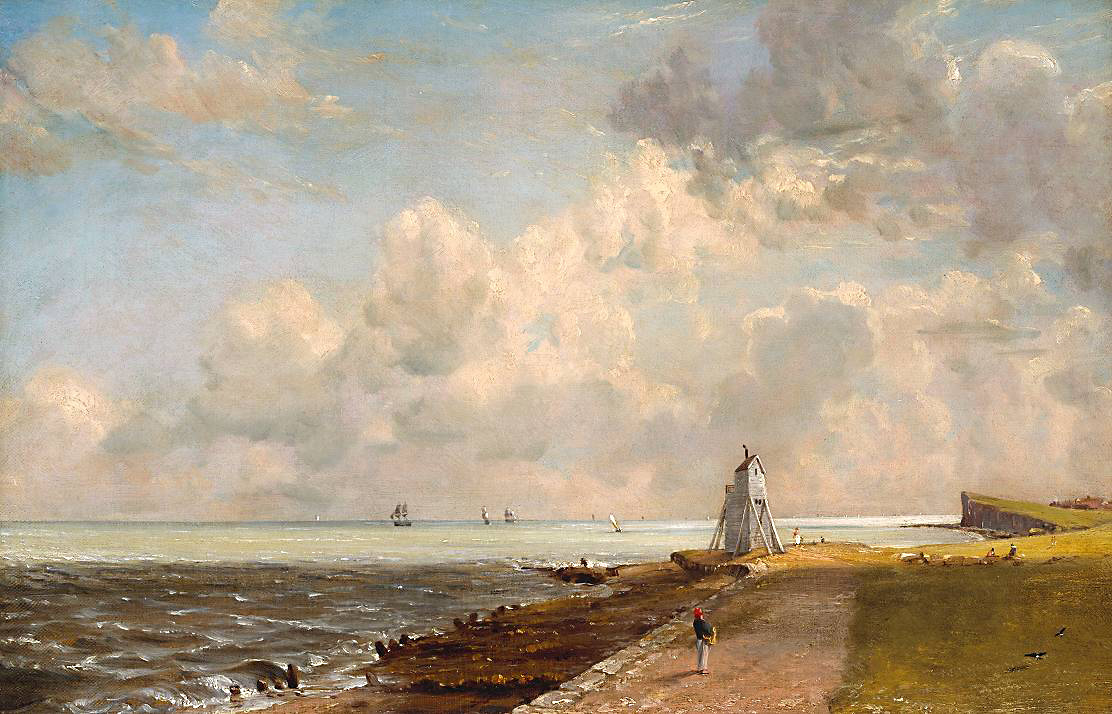
Put pieces of lead into a container filled with vinegar and then place the container in fresh dung. A few weeks later, flakes of the purest white will appear. This recipe for a perfect white paint was used – in different variations – for 6000 years. As it turned out, it was deadly. With one significant exception.
This common, naturally-occurring heavy metal was known as early as in Ancient Egypt in 4000 BCE, but started being extracted and used on a wide scale in Ancient Greece. It was undoubtedly linked to the discovery of silvery vein in Laurion near Athens. The mines became the source of wealth for this city, and one side effect of refining silver was tons of lead, since those two metals often appear in ores together.
Ancient Greeks and Romans knew how to use lead, as it is malleable, soft and has a low melting point (327.5°C). They used it in construction and shipbuilding, to make pipes, sarcophagi, figurines and writing tools. Because of its preserving and sweetening properties, lead was also used extensively in the kitchen to make dishes and containers, as well as medicines and face-whitening cosmetics.
Virtue the colour of alabaster
For thousands of years, the beauty canon, both in Europe and the Far East, encompassed a very pale complexion. People believed that this implied not only being well-born but also being healthly and, in the case of women, young, fertile and virtuous.
That this theory was to some extent rational is confirmed by the anthropologist, Bogusław Pawłowski from Wrocław University, author of Biologia atrakcyjności człowieka [The Biology of Human Attractiveness]. To his knowledge, in the case of the majority of researched peoples across the world, women indeed have paler skins, and usually the paler the skin is, the more attractive the woman is perceived to be. Women’s skins also become paler during ovulation. According to one of the hypotheses, this happens because it is easier to spot signs of potential diseases on pale skin, as well as signs of sexual arousal. “It is also thought,” Pawłowski adds, “that pale skin in women is the result of a higher need for calcium and therefore vitamin D, which is synthesized in the skin more vigorously when it has lower pigmentation.” And, as we know, pregnant and lactating women need more calcium.
All of this was not known to people in antiquity, but they did know that working outside resulted in a sun tan. Early on, complexion became an indicator of social status. Members of higher classes could afford to avoid sun and had paler complexions than peasants or tradesmen. Also, wealthy women could afford cosmetics that made their skin look paler or even whiter. For several thousand years, a pale face communicated social status. One look was enough to know who you were dealing with.
Out of whitening cosmetics, the most popular in antiquity were lead carbonate – known as white lead, ceruse or, from German, Bleiweiss – as well as lead oxide (litharge) and lead sulphide (galena).
Lead compounds were first used for cosmetic purposes by Greek women. Their learned compatriot Theophrastus of Eresos included a recipe for white lead in his treatise On Stones. “Lead is placed in an earthen vessel over sharp vinegar and after it has acquired some thickness of a kind of rust, which it commonly does in about ten days, they open the vessels and scrape it off. They then place the lead over the vinegar again, repeating over and over again the same process of scraping it till it has wholly gone. What has been scraped off they then beat to powder and boil (with water) for a long time and what at last settles to the bottom of the vessel is white lead.”
A contemporary chemist would explain that lead carbonate precipitates on the surface of the metal. The Greeks called it psimuthion and used it as powder, which was kept in… lead boxes. Many boxes of that kind with traces of white lead were found in the graves of Greek female aristocrats. Roman women adopted the habit of whitening their faces from the Greeks. Ovid, in his Medicamina Faciei Femineae (Cosmetics for the Female Face, also known as The Art of Beauty) recommends adding some white lead to the usual paste made of lupin, broad beans and iris root. Then Pedanius Dioscorides wrote that litharge cures eye diseases and can be used against wrinkles, scars and discolourations on the face. Pliny the Elder in Natural History said that litharge (used alternately with white lead) mixed with pork fat brings colours back to scars and helps heal wounds. “Its properties are the same as those of the substances above mentioned, the mildest of all the preparations of lead; in addition to which, it is also used by females to whiten the complexion.”
You needed to use moderation when whitening your skin, so as not to become the object of satirists, often mocking women who sported thickly covered faces. However, such moderation was not observed by geishas. The habit of whitening faces came to Japan in the sixth century from Korea and China, where white lead was prepared the same way as in Greece and Rome by steeping lead in strong vinegar. At first, the Japanese used nightingale droppings, until in 692 one Buddhist monk created a lead-based whitener and gifted it to Empress Jitō. Up until the 16th century, only women at the Japanese court covered their faces, necks and necklines with white lead. Later it became widely available.
In Europe, Christianity brought conviction that painting the skin was sinful and demoralizing. “Using makeup suggested that God’s creation wasn’t quite good enough in its original state, and that female vanity wished to improve upon it,” Lisa Eldrige writes in Face Paint. “Theological objections to cosmetics were to have a long life; male paranoia and anxiety over the use of cosmetics became absorbed into the teachings of the church. […] The new role model for femininity, behaviour, and beauty was the Virgin Mary.”
One of a kind paint
In the times of strict moralists, snow-white complexion remained the symbol of beauty, but white lead was sent to a cosmetic exile. However, it found a place for itself in the paintings that decorated churches and palaces. Chalk paints were only good for underpainting, while lead paints were unrivalled when it came to glazes. They produced the prettiest white, which worked well with various pigments, dried quickly, gave good coverage and didn’t crack.
And even though the 19th century brought the creation of zinc-based white (it crumbles) and titanium white (it doesn’t dry well), many painters remained faithful to lead white. “Other whites behave differently, flatten things, make the colours colder or are simply – like zinc white – too transparent,” says Michał Janicki, a graduate of graphics at the Academy of Fine Arts in Warsaw. He too uses lead white, even though it’s expensive and difficult to get, because selling various lead products is forbidden in Poland.
The dark side of white
Doctors were getting suspicious already in antiquity, but nobody listened to their warnings. Many historians see the reasons for the fall of the Roman Empire in the widespread use of this, as it turned out, toxic metal. And it’s not just about the nefarious madness of Caligula or Nero, which might have stemmed from lead poisoning. “Lead pots and dishes, lead acetate used as a sweetener, eagerly added to many foods, huge amounts of lead in condensed must – these are just some of the sources of lead that accumulated in human bodies in the ancient times,” writes Ewa Garasińska-Pryciak from the Nonpublic Medical College in Wrocław in her article “Związki ołowiu w antycznej kosmetyce” [Lead compounds in ancient cosmetics].
Lead is harmful, and especially dangerous to children. Lead salts and lead oxides get into the blood system, integrate into the structure of red blood cells, and enter soft tissue and bones, where they accumulate over years. “Long exposure to lead can result in lead neuropathy. Peripheral nerves get damaged, which manifests itself by sensory loss and even paralysis,” says Tomasz Stępień, a neuropathologist from the Institute of Psychiatry and Neurology in Warsaw. Lead poisoning can also result in sharp abdominal pain (lead colic), it can damage the bile duct, cause drowsiness, anaemia, hyperactivity, problems with the genito-urinary system and, in most acute cases, convulsions and death.
This metal devastates the body not only on the inside. “With long-term application, skin became discoloured, grey, and withered with hints of yellow, green and purple – so one ultimately ended up looking like dried-up, old fruit. Continued use also rotted the wearer’s teeth, produced bad breath, and caused hair loss and even permanent lung damage,” as Eldridge explains in Face Paint. The paradox was that the more you used white lead, the thicker the layer you needed to apply to disguise its dreadful results.
The Italian painter Giovanni Lomazzo warned in the 16th century that women using white lead quickly become “withered and grey-headed” and that the “mixture is naturally a great drier; and is used by chirurgeons [surgeons] to drie up moist sores.”
“The fashion for high foreheads around this time would very well have been due to the fact that lead paint caused hair loss and bald patches. Women may have been forced to shave or pluck the remaining unsightly patches with the result that their hairline gradually moved backwards,” Eldridge speculates, and adds that despite the numerous drawbacks of white lead, both women and men in aristocratic Europe used it to whiten their faces up until 1685. After the French Revolution, make-up became more toned-down, and the skin was whitened with zinc oxide, which was more translucent and looked more natural.
Poorer women willing to match the female aristocrats made their own whiteners or bought them from door-to-door salesmen. These were usually made of cheaper, widely available ingredients, such as milk, barley, almonds, horseradish, or oat flakes. They were harmless and gentle on the skin, in contrast to the expensive and toxic white lead.
Lethal white lead turned out to be beneficial in only one case. Thanks to art restorers, we know that one of the components of white lead, lead hydrate, gets dissolved in acidic oil and turns into the so-called ‘lead soap’ – an elastic substance that protects the painterly works of the old masters from the degrading effects of passing time.
Translated from the Polish by Anna Błasiak










